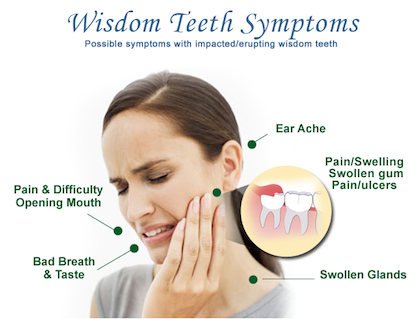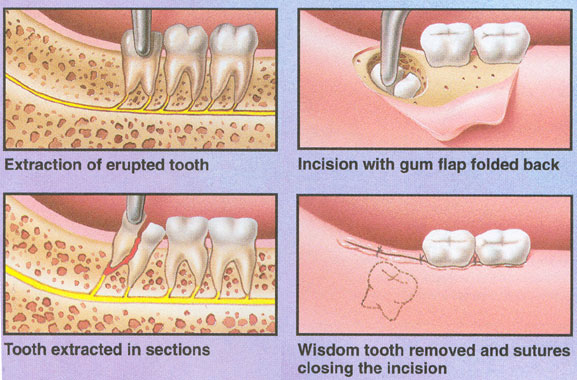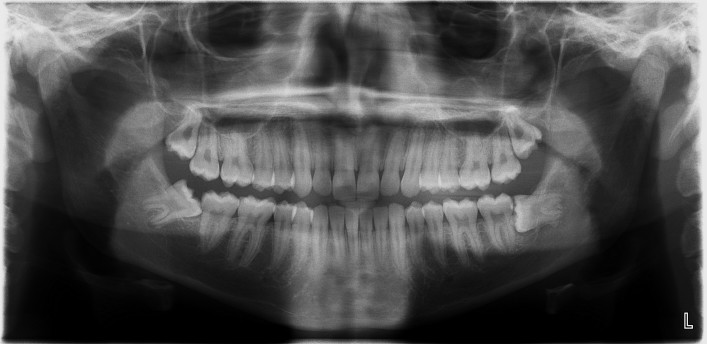Impacted Wisdom Tooth
 Wisdom teeth are the third and last molars on each side of the upper and lower jaws.
They are also the final teeth to erupt.
Many times wisdom teeth don’t have ample room in the jaws to grow and become trapped or fails to erupt to functional position within the jaw bone.
Nine out of ten people have at least one impacted wisdom tooth.
Wisdom teeth are the third and last molars on each side of the upper and lower jaws.
They are also the final teeth to erupt.
Many times wisdom teeth don’t have ample room in the jaws to grow and become trapped or fails to erupt to functional position within the jaw bone.
Nine out of ten people have at least one impacted wisdom tooth.
 • Swelling of the gum in the back of your mouth
• Swelling of the gum in the back of your mouth
• Difficulty opening your jaw
• Pain when opening the mouth
• Ear pain or pain the neighbouring teeth.
• Pain when chewing or biting
• Inaccessibility for daily oral hygiene maintenance.
Pain can occur for several days and then disappear. It can come back weeks or months later.
 Your dentist will take radiographs to confirm the position and shape of the wisdom tooth, and explain to the you the procedure .
Your dentist will take radiographs to confirm the position and shape of the wisdom tooth, and explain to the you the procedure .
Usually the procedures will be done under local anaesthesia (numbness of mouth only), or it may be done under sedation or general anaesthesia.
The wisdom tooth removal involves raising the gum flap, removing the covering bone. If needed the tooth is cut into few parts and the wound is cleaned and sutured .One week after tooth removal, the sutures are removed by the dentist after checking the healing.
 In most cases, impacted wisdom teeth don’t go unnoticed. There is often significant swelling, pain, and infection that come with impacted wisdom teeth. Sometimes, impacted wisdom teeth can cause inflammation of gums, damage to the adjacent teeth or nerve.
In most cases, impacted wisdom teeth don’t go unnoticed. There is often significant swelling, pain, and infection that come with impacted wisdom teeth. Sometimes, impacted wisdom teeth can cause inflammation of gums, damage to the adjacent teeth or nerve.
Many dentists believe it's better to remove wisdom teeth before the roots are fully formed to avoid complication.
